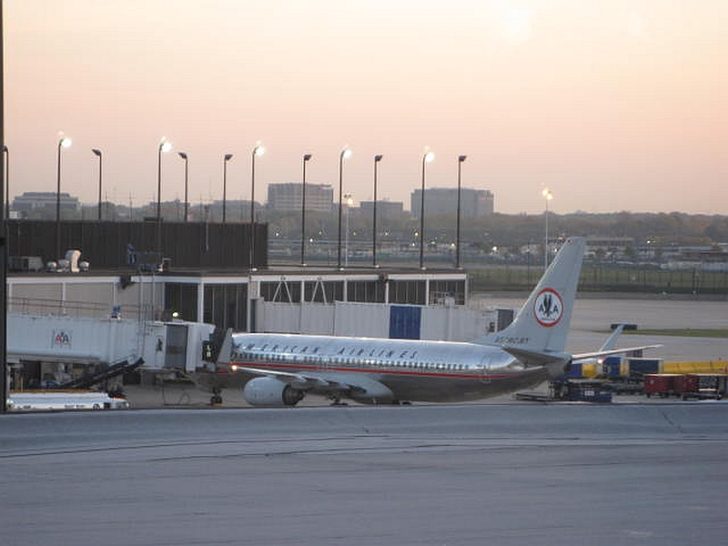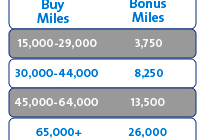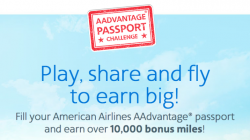
An American 737 in classic livery at Chicago O’Hare Airport
Last Sunday, the Dallas Morning News ran a profile on Hal Brierley, a Plano-based consultant who helped design the first airline loyalty program, American Airlines’ AAdvantage program, in 1980. Considered one of Bob Crandall’s most innovative ideas during his time at American, the launch of AAdvantage in 1981 revolutionized loyalty. Eventually, all the majors followed suit, kick-starting the points & miles game. The article chronicles Brierley’s career as a loyalty program consultant for many other travel loyalty programs; these include Hertz #1 Club Gold, Hilton HHonors, and United MileagePlus. It also describes his turbulent time at eRewards, building it into a dot com bubble juggernaut, nearly losing the company after the bust, then turning it back around by changing the company’s business model. He also opines on the future of airline loyalty programs, which I’ll comment on a little bit later.
But the most interesting nugget is saved for last. Brierley says he has earned more than 22 million AAdvantage miles since 1983. While a lofty number, it isn’t terribly out of the realm of possibility for a frequent traveler over 32 years. Elite status bonuses start adding up, after all. How Brireley has earned those miles, however, is pretty remarkable. He hasn’t paid a penny to American for airfare since 1983.
How does that work? Brierley was one of a handful of people that took advantage (no pun intended) of another American innovation of the 1980s, the AAirpass program. American originally pitched AAirpass as a lifetime prepaid, “all you can eat” flight option to business executives. The basic idea – a very frequent traveler could buy certainty by “prepaying” for a lifetime of flights. Thus, they could avoid the vagaries of modern airline revenue management (another Crandall innovation). The introductory price in 1983? $250,000 for one, or $400,000 for two, with a discount for fliers over the age of 40. Brierley, over 40 at the time, paid $352,000 for his two-person AAirpass.
Of course, an AAirpass exempted holders from paying airfare, even for taxes, ever again. That deal worked out well for Brierley; he claims to have received more than $10 million worth of air transportation for his initial investment, for an average annual return of roughly 11.222%. By comparison, the S&P 500 averaged a 10.12% return over the same period. Who knew prepaying $352,000 of airfare might make a better investment than the stock market?
But here’s the kicker. The purchase of an AAirpass granted the buyer two other ancillary benefits. One was a lifetime AAdmirals Club membership. The other – you guessed it – the ability to earn AAdvantage miles on every ticket. That has allowed Brierley, and the select few other individuals who purchased the original AAirpass, to rack up insane amounts of frequent flier miles without paying another penny to American along the way. Not bad at all, if you ask me.
Sound Too Good to be True? American Sure Thought So
While the exact number of people who purchased an AAirpass remains unclear – the DMN article suggests around 30 people purchased a lifetime pass, whereas a Los Angeles Times article from 2012 puts the number at 66 – those who did purchase one undoubtedly received a tremendous deal. As former chairman Bob Crandall put it, “it soon became apparent that the public was smarter than we were”. American then raised the price of an AAirpass with companion to $600,000 in 1990, and to $1.01 million in 1993. Sales stopped entirely in 1994. As a historical side note, American did make one more attempt to sell an unlimited AAirpass. The hometown Neiman-Marcus Christmas Catalog in 2004 offered a single or companion pass for $3 million and $5 million, respectively. Nobody took the bait, though Dallas media widely features the gimmick during that holiday season.
Turns out American was just getting started, though. Apparently not content to just stop selling the pass and wait for their users to stop flying, the airline began aggressively investigating AAirpass users in 2007. Several passes were confiscated, leading to a protracted legal battle as detailed in the LAT story. (If this sounds familiar, that’s because it is. My colleague Matthew reported on the AAirpass controversy back in 2012; please check out his post for more details.) Somehow, though, I suspect they’ll allow Brierley to enjoy his companion pass without interruption. I doubt anyone over at headquarters in Ft. Worth is short-sighted enough to anger the architect of one of the airline industry’s most successful innovations.
Reforming Airline Loyalty Programs, Straight From the Horse’s Mouth
As mentioned earlier, Brierley also opined on how he thinks airline loyalty programs should evolve. Brierley believes loyalty programs have become too rich, reasoning that the number of miles awarded to super elites is out of proportion to the value of the miles themselves. I don’t really follow the logic, though. He states that an Executive Platinum making three round trips at $250 each in coach earns enough miles for a $2,500 coach ticket. DFW to SFO in the cheap seats earns an Exec Plat 1,464 base miles each way + 100% bonus miles = 5,856 miles for each round trip, or 17,566 miles total for three round-trips. JFK to SFO yields 31,032 miles for three trips in the cheap seats. From DFW, that doesn’t even get you a domestic Mile SAAver award in coach, and JFK barely gets you there. That’s nowhere near a $2,500 ticket.
In any event, due to this perceived richness of the program, Brierley suggests moving to a model where instead of free flights, passengers would be issued a voucher with a fixed airfare value when redeeming a reward. Using a value of 2 cents/mile, a domestic Mile SAAver award (25,000 miles) then entitles you to a $500 voucher. Particularly if the program is structured to where residual value can be applied to a second ticket, such an approach would theoretically allow you to “redeem” more than one ticket on a 25,000 mile award. Sounds great, right?
I get Brierley’s point. When we receive a voucher or gift card with a fixed value, we often spend more than the voucher value. Thus, the company receives more revenue, while making the consumer feel as though he or she received a better item at a bargain price. In practice, though, I see two issues with this approach when it comes to frequent flier programs. The first is the value to assign to a mile. Most generally consider two cents per mile a fair value, but would the airlines really do that? Or would they follow the credit card model with one point equal to one cent? My 25,000 mile example would only yield a $250 voucher in that case. Not terribly compelling for an award. Of course, the idea is you’d use the voucher to buy up to a higher fare class or bring a companion.
Plus, unlike award tickets, airlines treat tickets paid with vouchers as “paid” tickets, and thus eligible for mileage accrual. That provides a “double dip” opportunity to some extent. But the reality is, many mileage redemption occur on so-called “aspirational” awards, i.e. redeeming first and business class tickets that one would never be able to afford otherwise. The dollar value of your miles is much higher in this case. The last time I cashed in miles for a business class ticket to India, for example, I used 135,000 miles for a ticket that retailed for ~$6,500, yield a value of 4.8 cents per mile. First class saver awards can be even more lucrative. If the airlines were to switch to a system where a mile is now worth a fixed value of 1-2 cents, I don’t see most people seeing that as an “enhancement”.
Which brings me to the second, and perhaps larger, issue. Making redemptions equal to a fixed dollar value would put aspirational awards pretty much completely out of reach. If we use the Mile SAAver business class award as an example, 135,000 miles at 2 cents/mile would yield a voucher worth $2,700. Unless you find an exceptional fare sale, you’re not going to find a business class ticket to India for $2,700. A discount business fare on Oneworld member Qatar Airways from DFW to Delhi today retails for roughly $3,900 and up (aside – that’s actually an exceptionally cheap fare for an exceptional in-flight product, if you have a little money to burn). That would still leave you on the hook for ~$1,200.
Given that typical business class fares are generally in the $5,000-6,000 range, chances are, you’ll be paying a lot more. I just don’t see doing enough flying to earn 135,000 miles, just to have to cough up $2,500 for a business class award ticket, as a particularly exciting proposition. The numbers become larger, of course, when talking about first class awards. For that matter, would vouchers be usable on partner airlines, or only on the issuing carrier? I’d assume they’d have to be, but getting that to actually work in practice would seem to be quite a challenge.
Anyway, consider yourself forewarned. If the pioneer of mileage programs has this in mind, chances are, someone’s going to try it before too much longer. Then again, maybe I shouldn’t give Delta any ideas…




